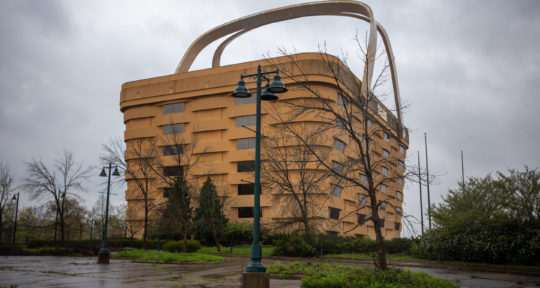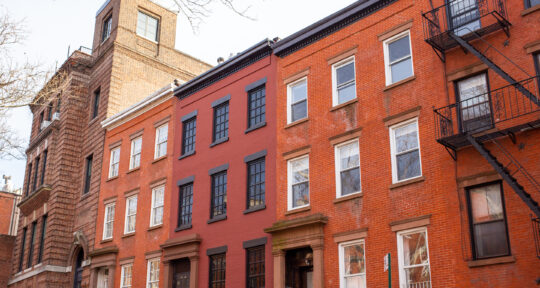When J. Irwin Miller wanted to bring a modern church to his hometown of Columbus, Indiana, it was mainly his family that needed convincing. The Millers were the most prominent family in town. They owned a local bank and co-founded Cummins Engine Company, an industry-leading diesel engine company.
When their congregation outgrew its previous building, the Miller family graciously donated land and money to build a new one. But it was J. Irwin who wanted a modern design—his family was more in favor of a gothic church. He believed modernism represented the values of both Columbus and his church, and eventually convinced the rest of his family to see it his way.
Modernism’s less-is-more aesthetic was a stark departure from the more ornamental art deco and neoclassical styles that came before it. But J. Irwin understood that the congregation was not interested in luxury or showing off. They valued simplicity and community and had selected the theme “Our church is our people.”
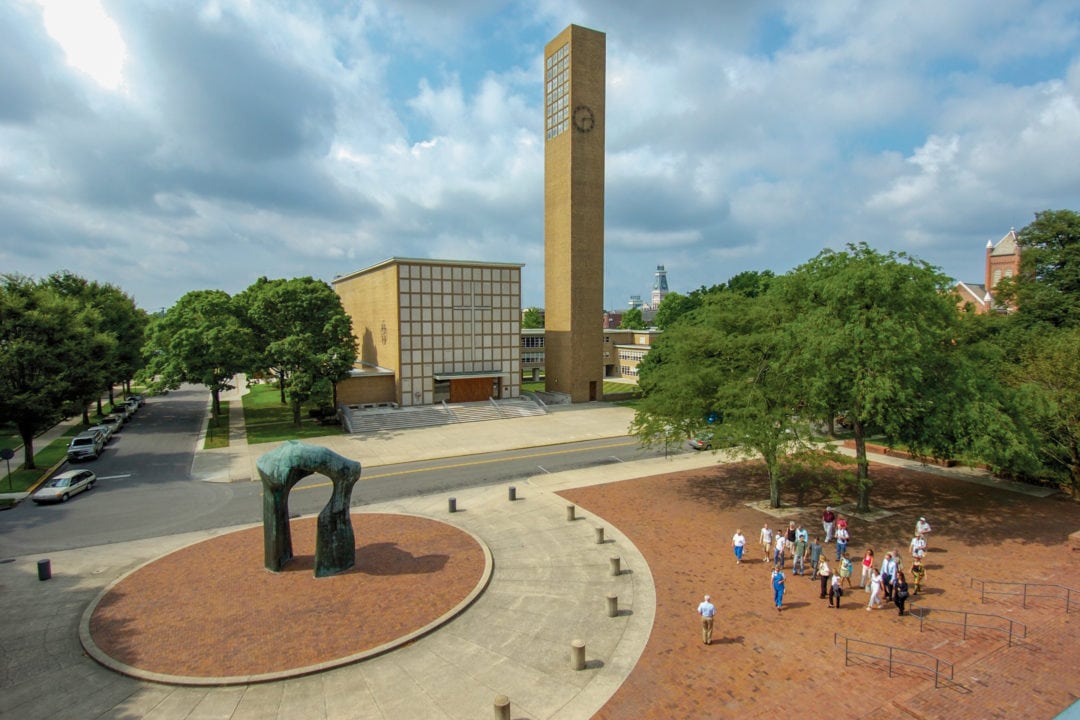
“This was really radical for its time,” says Erin Hawkins, director of marketing at the Columbus Visitors Center, as we stand in front of First Christian Church. “There were rarely churches without a steeple on top with a cross on it.” The product of J. Irwin’s efforts is undoubtedly beautiful, featuring a stone cross embedded within the geometric limestone facade. A freestanding bell tower to the right of the main building makes the entire structure feel slightly off-center in an intentional and eye-catching way. Its clean lines, flat planes, and minimal aesthetic perfectly encompass the ethos of mid-century design. Nothing is overdone; it’s simple, functional, and effortless.
The building’s designer, Eliel Saarinen (father of famous architect Eero Saarinen), originally declined the commission, believing that American churches were too theatrical and over-the-top. He eventually agreed to the project after convincing words from J. Irwin and his mother, Nettie Sweeny Miller: “While we should like the church to be beautiful, we do not want the first reaction to be, ‘How much did the church cost?’” Nettie told Saarinen. The building was constructed in 1942 and declared a National Historic Landmark in 2001.
A mecca of mid-century modern architecture
While I’m admiring First Christian Church, a plant sale is happening at the library behind me. Columbus residents stroll around fold-out tables holding seeds and saplings, seemingly unbothered by the fact that they’re choosing their garden compositions in front of a building designed by I.M. Pei. This isn’t to say that they don’t appreciate the beauty of the building, just that impeccable design by some of the 20th century’s most important architects is the norm in this southern Indiana town.
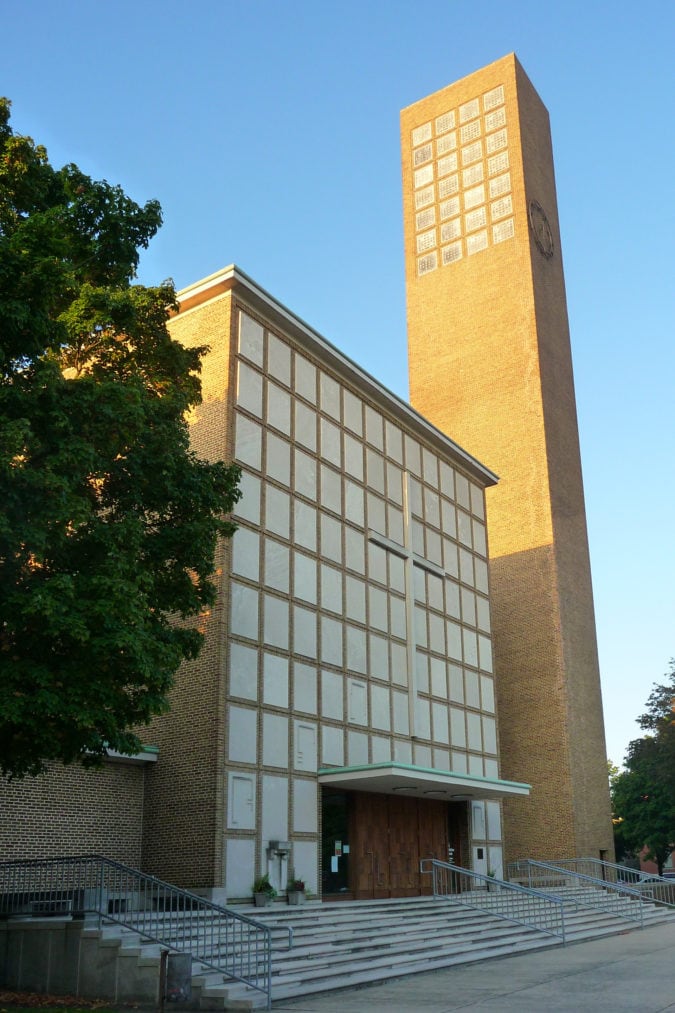
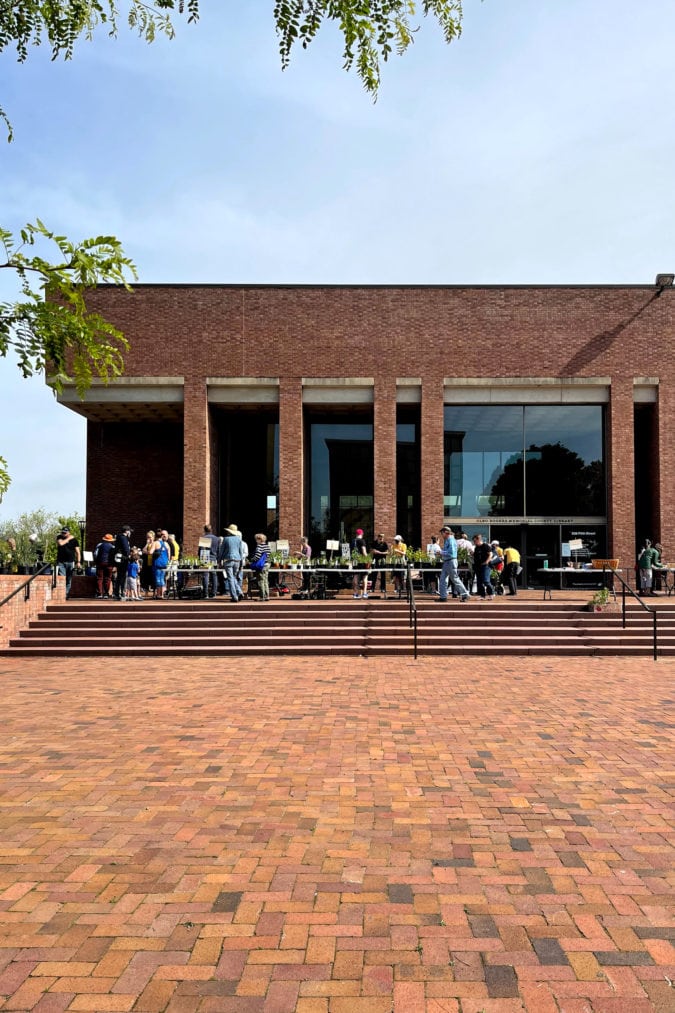
Like many places in this part of the country, the land is mostly flat and dotted with cornfields. The population is small—about 44,000—but the 28 square miles that make up Columbus are anything but the stereotypical midwestern town.
Columbus is a mecca of mid-century modern building design and, according to the American Institute of Architects, the sixth most architecturally-important city in the U.S. It is certainly the most impressive for its size, trailing only Chicago, New York, Boston, San Francisco, and Washington, D.C. And nearly every building in the town leads back, in one way or another, to J. Irwin Miller.
In addition to being a man Martin Luther King once called “the most socially responsible businessman in the country,” J. Irwin Miller was an industrialist, patron of the arts, and philanthropist. “Most of the people who had contact with him in one area or another were very impressed by him, because he was impressive,” says Nancy Kriplen, author of J. Irwin Miller: The Shaping of an American Town.
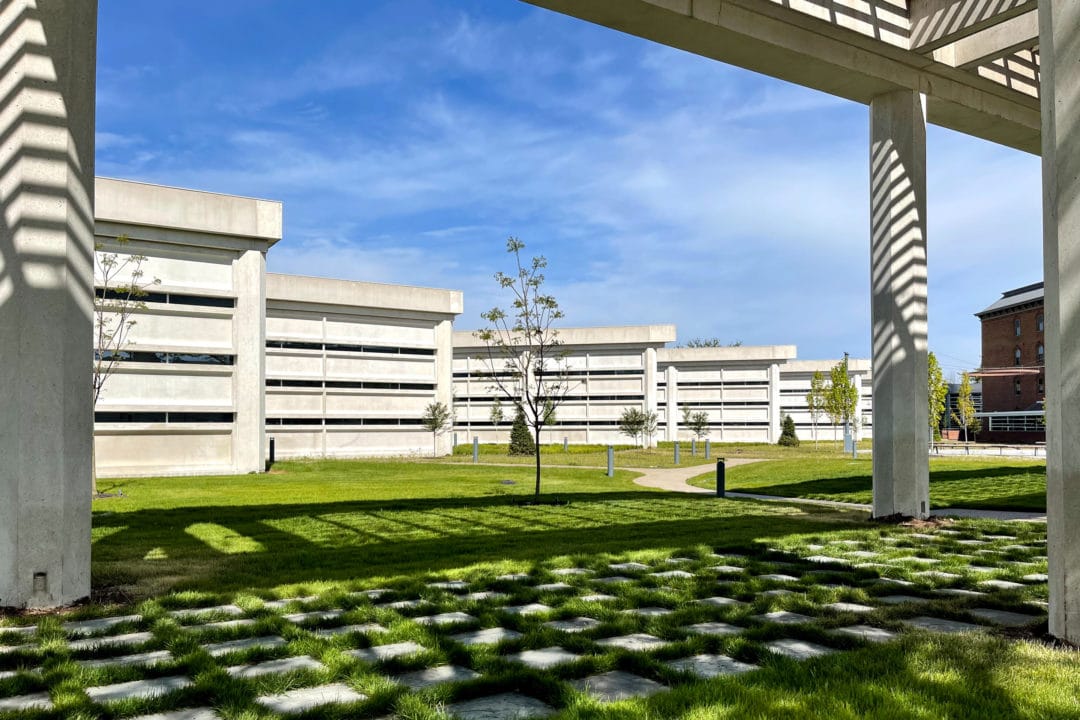
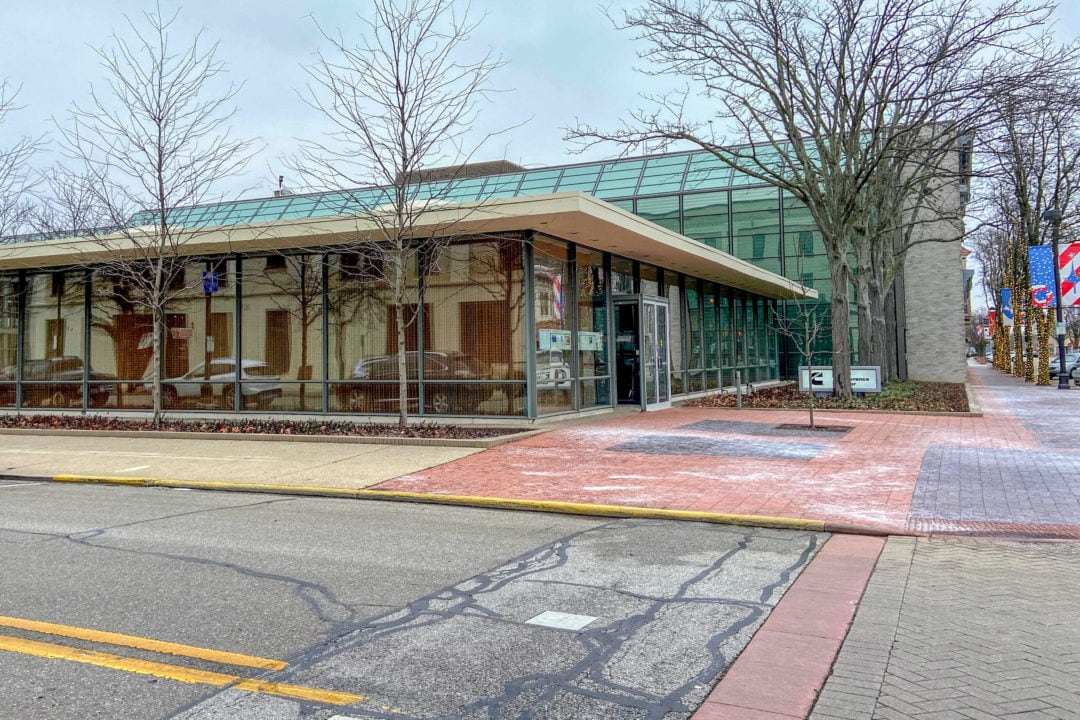
The case for good design
While there are varying descriptions of how J. Irwin developed his appreciation for modern design—some claim it was through an undergraduate course he took at Yale and others credit his travels through Europe—there’s no question he wanted more of it in Columbus.
J. Irwin’s business, Cummins Engine Company, was struggling to attract strong talent. Knowing the Midwest couldn’t compete with mountains, beaches, or major cities in the country’s coastal regions, J. Irwin needed a solution that would encourage potential employees to move to southern Indiana. He believed that to be successful, a company had to satisfy five major stakeholders: customers, employees, partners, investors, and the community. “Community was the unusual one,” Kriplen says. “He was always very aware of what Cummins would do to people, especially people living in Columbus.”
With the post-war baby boom spreading across the U.S., and seeing the success of First Christian Church, J. Irwin believed Columbus could offer parents a one-of-a-kind education for their children. While he understood that good teachers and a strong curriculum were integral to education, he also believed good design could help foster these basic prerequisites.
In 1957, J. Irwin proposed the Cummins Foundation Architecture Program. Cummins would pay the architectural fees for new public schools so long as the city selected a designer from a pre-approved list. The inaugural school, Lillian C. Schmitt Elementary, was designed by Harry Weese. Maybe one of the most successful examples of a public-private partnership, the project soon expanded past schools to other civic buildings, including the library. “Good design became a community value,” Hawkins says. “Then, independent businesses started hiring their own architects, as well as independent church congregations.” As a result, Columbus became the living museum of modern design that it is today.
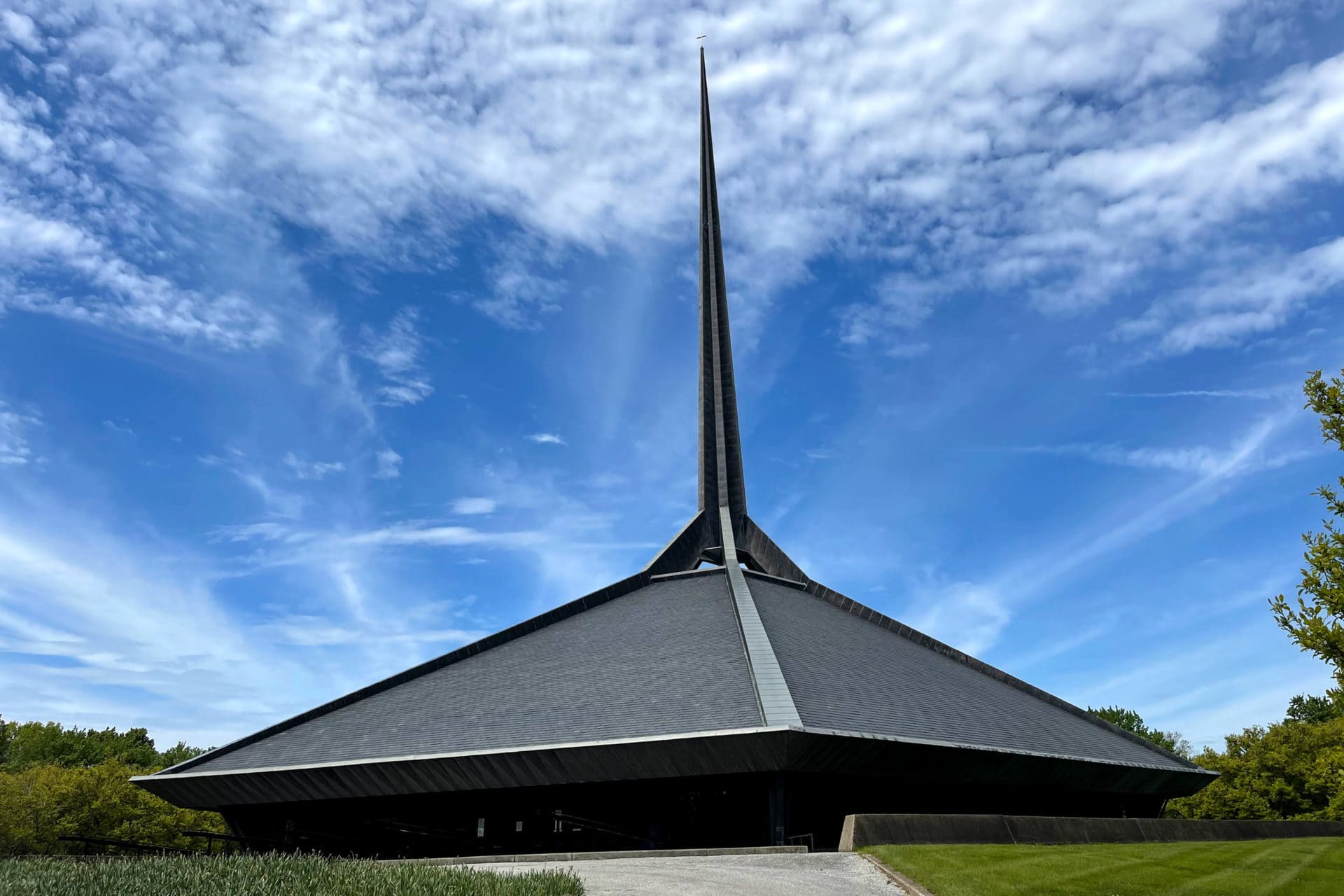
Columbus, Indiana, and Washington, D.C.
Other notable buildings in Columbus include Fire Station Number 4 by Robert Venturi, The Irwin Conference Center (previously the Irwin Union Bank and Trust) and North Christian Church by Eero Saarinen, and The Republic Newspaper Office by Myron Goldsmith of Skidmore, Owings & Merrill.
My personal favorite is the post office designed by Kevin Roche in 1970. “People have really strong reactions to this building,” Hawkins says. “They either love it or hate it.” The building’s large brick columns support a flat roof that extends over floor-to-ceiling windows, creating a tunnel-like walkway for people to wander through on their way to drop off packages.
This particular post office has an interesting origin story. Sitting in the Oval Office with President Lyndon B. Johnson, Lee Hamilton, a congressman from Indiana’s ninth district, lobbied then-postmaster general Larry O’Brien to allow Columbus to defect from the traditional designs and architects the postal department was accustomed to using. As Kriplen describes in her book, the president turned and said, “Larry, you give Hamilton anything he wants.” Roche’s post office is what he wanted.
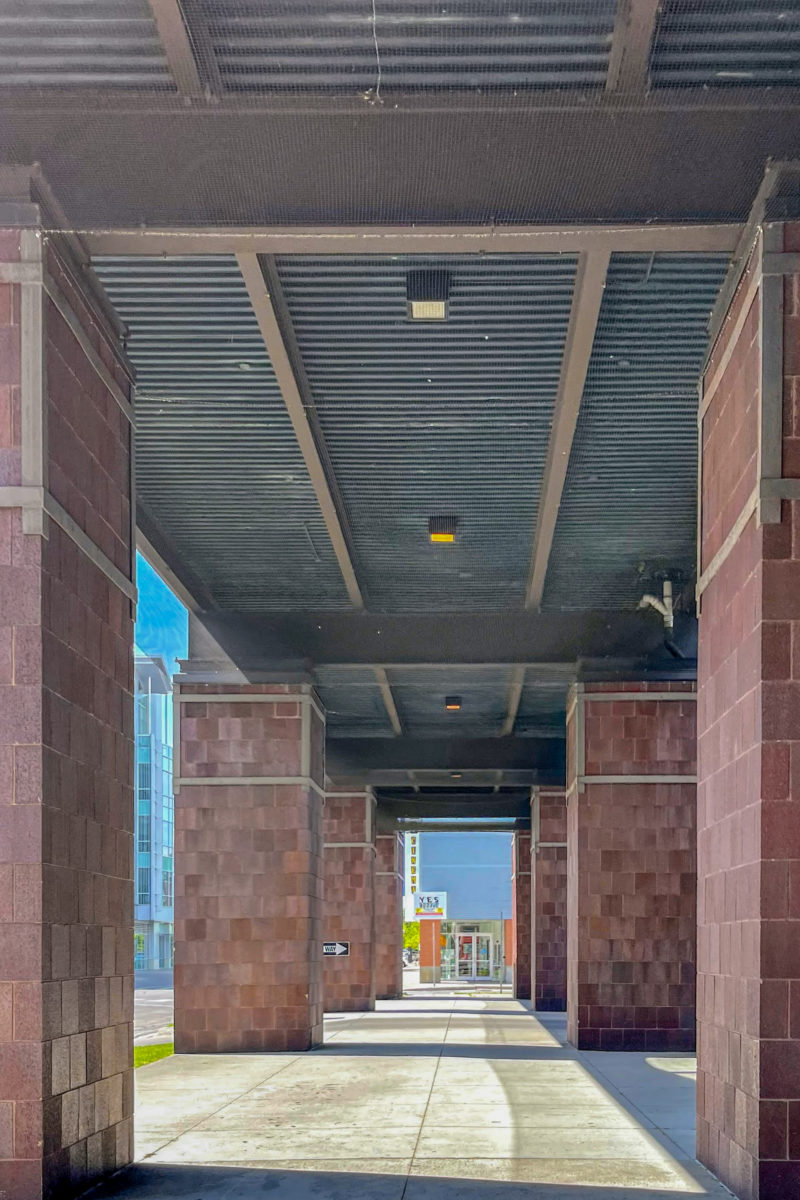
A community investment
To this day, the architecture program’s ultimate accomplishment goes beyond pure aesthetics and historical impact. Columbus has been cited as an example of how investing in people and community works. It’s one of the few manufacturing towns that wasn’t impacted by industrial decline in the 1980s, mostly escaping the infamous maladies that plague similar towns across the “Rust Belt.”
Cummins is doing well too—it’s a Fortune 500 company that currently employs more than 58,000 people. And even 15 years after J. Irwin’s death, his pet project lives on; the latest installment is a new campus for Ivy Tech Community College, the state’s largest public postsecondary institution.
As we finish our walk, Hawkins sums up her feelings about Columbus’ unexpected cache in the world of modern architecture: “It’s inspiring to me, the impact a few people can have on an entire city.”


